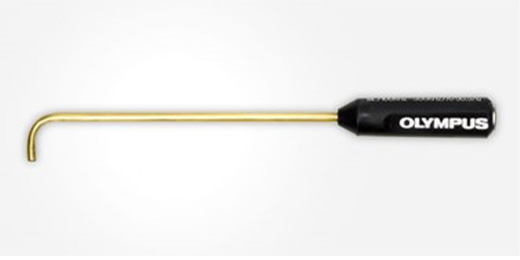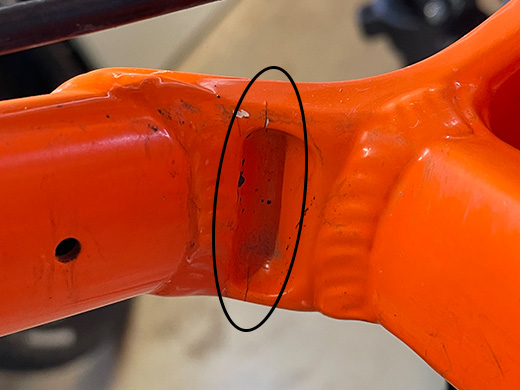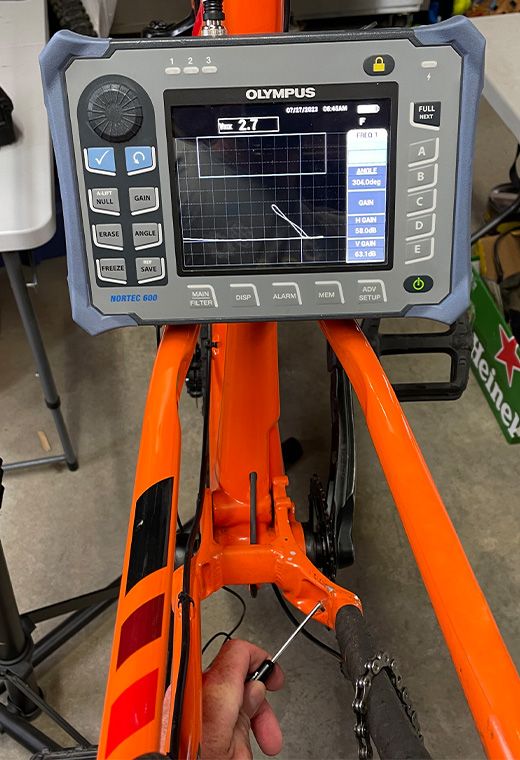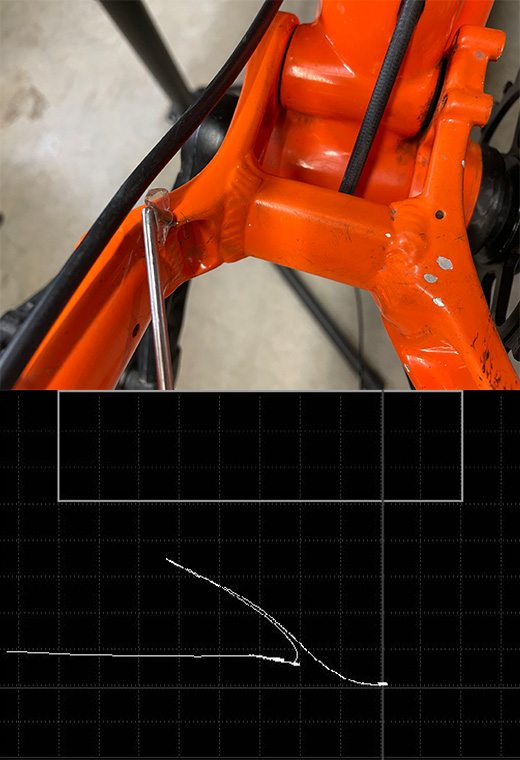A bicycle frame can be made of different materials, such as steel, aluminum, chromoly, and composite. Once in the field, the frame may become damaged from a range of incidents, such as heavy use of the bike, bike crashes, or accidents such as the bike falling off a car bike rack. For bike frames made of conductive materials like aluminum, steel, or chromoly, eddy current technology can be used to detect surface cracks.

With the growing popularity of biking, such has road biking and mountain biking, frame failure may happen more often. Bike frame failure can cause expensive repairs and, in some cases, could lead to major injury if the rider crashes. Today, there is no real way to predict a frame failure. Visual inspection is not accurate since the parts are painted. A crack-like indication on the frame could be only a paint crack, and a real crack can be hidden under the paint.
|
|
Cracked area on a bicycle frame.
The eddy current method is the only nondestructive testing (NDT) technique that enables crack detection without removing the paint. It is very easy to deploy. With or without paint, eddy current technology can detect a surface-breaking crack. A basic NORTEC™ 600 eddy current flaw detector with a standard pencil probe (50–500 kHz) can easily detect surface cracks on a metallic frame even if the geometry is complex or welded.
|
|
Eddy current scan of a cracked area on a bicycle frame using the NORTEC 600 eddy current flaw detector.

Example of an eddy current pencil probe.
Prevention is the key. Identifying a crack before frame failure improves rider safety. It may also save the rider money, as they can avoid other parts breaking. The NORTEC 600 flaw detector using a standard pencil probe is an easy and affordable solution for bicycle frame inspection.






